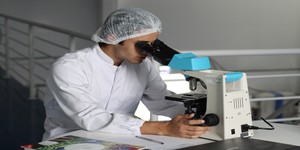Lasers prove key to terabit-per-second storage
February 8, 2012 | 12:32
Companies: #university-of-york

Researchers have published a paper detailing a way of using laser heating to significantly speed up the data transfer capabilities of the humble hard drive.
In a paper published in the Nature: Communications journal, a team of researchers led by Thomas Ostler from the University of York detail a method of dramatically increasing data storage speeds of magnetic hard drives using a laser-based heating system.
In the paper, a system is detailed whereby a laser briefly heats the magnetic medium to a temperature of around 800 degrees Celsius for a brief period using a sub-picosecond laser pulse. This heating, the team found, significantly speeds up the process of reversing the magnetic polarity of a particular bit compared to the traditional methods of using another magnet or electricity.
While much of the paper is indecipherable to the layman, its conclusions are clear: it's now proven possible to alter the magnetic polarity of a medium by blasting it with a laser.
The team's work is far from a commercial reality, of course. There are questions to be answered about how the technology can be implemented in a way that won't bankrupt anyone hoping to buy a laser-based hard drive, while the experimental results don't address the issue of medium longevity.
It's a promising start to a potentially disruptive new technology for the storage space, however. According to the team's findings, a laser-based hard drive would have two main advantages over a typical magnetic drive. The first is energy efficiency: while high power, the laser pulses for such a tiny amount of time the overall power draw is much less than a magnetic drive would require for the same operation.
It's the performance that is of the most interest, however. A laser-based storage system could write at speeds in the terabytes per second region, making the fastest solid-state drive available today seem positively pedestrian in comparison.
Sadly, Ostler and his team are silent on when - or, indeed, if - the technology will be making ti to the desktop.
Fancy strapping some frickin' lasers to your storage system, or is this just another pie-in-the-sky idea from the boffins? Share your thoughts over in the forums.
In a paper published in the Nature: Communications journal, a team of researchers led by Thomas Ostler from the University of York detail a method of dramatically increasing data storage speeds of magnetic hard drives using a laser-based heating system.
In the paper, a system is detailed whereby a laser briefly heats the magnetic medium to a temperature of around 800 degrees Celsius for a brief period using a sub-picosecond laser pulse. This heating, the team found, significantly speeds up the process of reversing the magnetic polarity of a particular bit compared to the traditional methods of using another magnet or electricity.
While much of the paper is indecipherable to the layman, its conclusions are clear: it's now proven possible to alter the magnetic polarity of a medium by blasting it with a laser.
The team's work is far from a commercial reality, of course. There are questions to be answered about how the technology can be implemented in a way that won't bankrupt anyone hoping to buy a laser-based hard drive, while the experimental results don't address the issue of medium longevity.
It's a promising start to a potentially disruptive new technology for the storage space, however. According to the team's findings, a laser-based hard drive would have two main advantages over a typical magnetic drive. The first is energy efficiency: while high power, the laser pulses for such a tiny amount of time the overall power draw is much less than a magnetic drive would require for the same operation.
It's the performance that is of the most interest, however. A laser-based storage system could write at speeds in the terabytes per second region, making the fastest solid-state drive available today seem positively pedestrian in comparison.
Sadly, Ostler and his team are silent on when - or, indeed, if - the technology will be making ti to the desktop.
Fancy strapping some frickin' lasers to your storage system, or is this just another pie-in-the-sky idea from the boffins? Share your thoughts over in the forums.

MSI MPG Velox 100R Chassis Review
October 14 2021 | 15:04








Want to comment? Please log in.